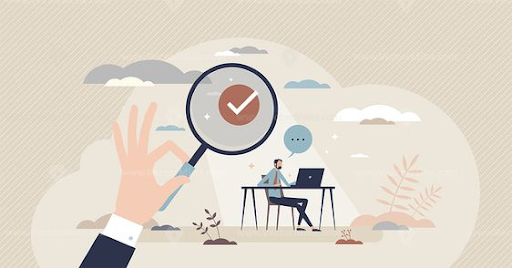Employee Privacy and Surveillance in Integrity Testing
In today’s competitive business environment, maintaining ethical standards through integrity testing is crucial. However, balancing effective surveillance with respecting employee privacy is a growing challenge. With advancements in
surveillance technology
and increased awareness of privacy rights, businesses must develop clear guidelines to navigate this delicate balance. For organizations in Sydney, achieving this equilibrium is essential for fostering trust and compliance. This article explores the importance of integrity testing, the role of surveillance, and best practices for respecting employee privacy while conducting ethical monitoring.
Understanding the Need for Integrity Testing
What is Integrity Testing?
Integrity testing
involves a set of procedures and assessments used by organizations to ensure their employees adhere to ethical standards and company policies. These tests can range from personality assessments and background checks to more intrusive measures such as surveillance and monitoring. In the corporate world, maintaining a high level of integrity is crucial for fostering a trustworthy environment and mitigating risks associated with unethical behavior.
Importance of Integrity Testing in Organizations
Integrity testing plays a pivotal role in maintaining ethics within an organization. By implementing these tests, companies can identify potential risks, prevent fraud, and ensure compliance with industry regulations. This is particularly important in fields where ethical lapses can have significant consequences, such as finance, healthcare, and law enforcement. For businesses in Sydney, maintaining organizational compliance and
preventing fraud
is essential for building a reputable brand and gaining the trust of clients and stakeholders.
The Role of Surveillance in Integrity Testing
Surveillance Methods and Techniques
Surveillance in the workplace can be conducted through various methods and techniques. These include video surveillance, computer monitoring, GPS tracking, and even social media monitoring. The use of advanced surveillance technology allows organizations to monitor employee activities and behaviors, ensuring that they comply with company policies and ethical standards. However, it is crucial to implement these methods ethically and transparently to avoid infringing on employee privacy.
Benefits of Surveillance in Ensuring Integrity
The benefits of surveillance in integrity testing are manifold. By employing effective surveillance strategies, companies can detect fraudulent activities early, ensure compliance with legal requirements, and uphold ethical standards within the organization. Surveillance technology can act as a deterrent to unethical behavior, as employees are aware that their actions are being monitored. In Sydney, where businesses are constantly under scrutiny, maintaining a high level of integrity through surveillance can enhance corporate reputation and client trust.
Balancing Employee Privacy and Surveillance
Legal Considerations and Employee Rights
When implementing surveillance measures, it is essential to consider the legal framework surrounding employee privacy. Organizations must ensure compliance with local privacy laws and regulations, which vary from region to region. In Australia,
the Privacy Act 1988
and
the Fair Work Act 2009
provide guidelines on how employers can conduct surveillance while respecting employee rights. Companies must inform employees about the extent and nature of surveillance and obtain their consent where required.
Ethical Considerations in Employee Surveillance
Ethical considerations are equally important when conducting employee surveillance. Employers must strike a balance between monitoring activities to ensure integrity and respecting the privacy of their employees. Ethical surveillance practices involve transparency, accountability, and fairness. Organizations should avoid invasive monitoring techniques that could lead to a breach of trust or create a hostile work environment. It is essential to address privacy concerns and ensure that surveillance measures are proportionate to the risks being mitigated.
Best Practices for Respecting Privacy While Conducting Surveillance
To respect employee privacy while conducting surveillance, organizations can adopt several best practices:
- Develop clear privacy guidelines: Establish and communicate comprehensive policies outlining the scope and purpose of surveillance activities.
- Obtain informed consent: Ensure that employees are aware of and consent to surveillance measures.
- Limit the scope of surveillance: Monitor only activities that are directly related to ensuring integrity and compliance.
- Regularly review policies: Continuously evaluate and update surveillance policies to align with legal requirements and ethical standards.
- Ensure data security: Implement robust security measures to protect the data collected through surveillance.
Implementing Effective Surveillance Policies
Developing Clear Surveillance Policies
Creating effective surveillance policies is crucial for balancing integrity testing with employee privacy. Organizations should develop a policy framework that clearly defines the objectives, methods, and limitations of surveillance activities. This policy should outline the types of surveillance used, the circumstances under which monitoring is conducted, and the procedures for handling collected data.
Communicating Surveillance Policies to Employees
Transparent communication is key to gaining employee trust and cooperation in surveillance activities. Employers should communicate surveillance policies clearly and openly, ensuring that all employees understand the purpose and scope of monitoring. Regular training sessions and informational materials can help educate employees about their rights and responsibilities regarding surveillance. By fostering a culture of transparency, organizations can reduce resistance to surveillance measures and promote a more ethical work environment.
Case Studies: Successful Balancing of Privacy and Surveillance
Case Study 1: Financial Institution in Sydney
A leading financial institution in Sydney successfully balanced employee privacy
and surveillance by implementing a comprehensive integrity testing program. The organization developed clear surveillance policies that focused on high-risk areas such as financial transactions and customer interactions. By using advanced monitoring technologies and conducting regular audits, the institution was able to detect and prevent fraudulent activities while maintaining employee trust through transparent communication and adherence to privacy guidelines.
Case Study 2: Healthcare Provider in New South Wales
A healthcare provider in New South Wales faced challenges in balancing privacy and surveillance due to the sensitive nature of patient information. The organization adopted a targeted surveillance approach, monitoring only specific activities related to patient care and data handling. By providing employees with detailed information about surveillance practices and emphasizing the importance of data security, the healthcare provider successfully maintained ethical standards and compliance with privacy laws.
Conclusion
Balancing employee privacy and surveillance in integrity testing is a complex but essential task for organizations. By developing clear policies, communicating transparently, and adhering to legal and ethical standards, companies can ensure both compliance and trust within the workplace.
For businesses in Sydney, adopting best practices in surveillance can enhance corporate reputation and foster a culture of integrity. Organizations must strive to find the right balance, ensuring that surveillance measures are effective in maintaining ethical standards without compromising employee privacy.
FAQs About Employee Privacy and Surveillance in Integrity Testing
Why is balancing employee privacy and surveillance important?
Balancing employee privacy and surveillance is crucial for maintaining a trustworthy and ethical work environment. It helps organizations ensure compliance with legal and ethical standards while respecting employee rights.
What are the legal considerations for employee surveillance?
Legal considerations for employee surveillance include compliance with local privacy laws and regulations, such as the Privacy Act 1988 and the Fair Work Act 2009 in Australia. Organizations must inform employees about surveillance measures and obtain their consent where required.
How can organizations implement ethical surveillance practices?
Organizations can implement ethical surveillance practices by developing clear privacy guidelines, obtaining informed consent, limiting the scope of surveillance, regularly reviewing policies, and ensuring data security.
What are some successful examples of balancing privacy and surveillance?
Successful examples include a financial institution in Sydney that used targeted surveillance to detect fraud and a healthcare provider in New South Wales that monitored specific activities related to patient care while maintaining data security and transparency.




